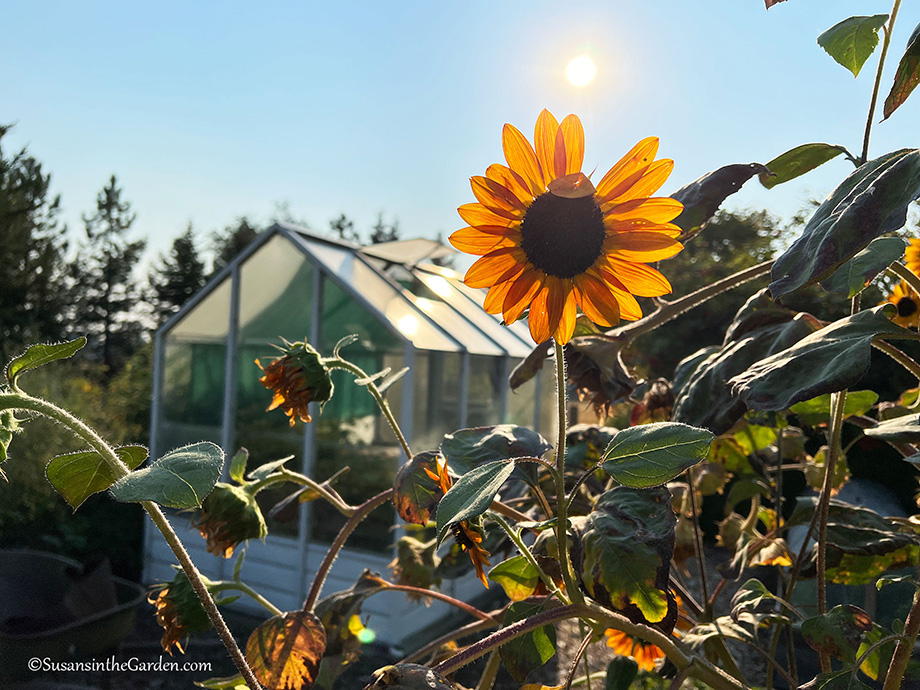Sept. 25 Column: Fall Garden Tasks


Can you believe it’s the 25th of September already? I sure can’t! There are plenty of fall garden tasks to take care of in the coming weeks, depending on where you live. This is the topic of my garden column for today. You can read it in The Spokesman-Review: Fall garden tasks. Or you can read the text of my column underneath the video below.
Examples of fall garden tasks coming up include planting garlic in October so you can harvest lovely bulbs in the summer; being careful about not getting too tidy while cleaning things up; and writing notes about how this year’s garden performed. I hope you will my column and pick up an important tip or two.
As a passionate vegetable gardener, I think the topic of my newest video is exciting: harvesting your winter squash and pumpkins. And, of course, a reminder to “cure” them in a warm, light, sheltered area for 2 weeks before moving them into storage.
Here is my garden column:
by Susan Mulvihill
Fall is such a beautiful season here in Spokane and one that we all should savor. While our vegetable gardens and flower beds are winding down for the year, there are still items on our to-do lists that need attending to.
Harvest your potatoes after their foliage has been frosted and turns brown. This is one of my favorite jobs because it’s like digging for buried treasure. It’s perfectly OK for root crops such as carrots, parsnips and beets to get hit by frost. In fact, it sweetens their flavor. Bill and I have had good luck storing all of these crops in plastic bins filled with lightly-moistened straw and placing them in our chilly garage.
Plant garlic between the middle of October and Halloween. If you haven’t grown it before, purchase hardneck or softneck bulbs that are certified to be disease-free from a garden center. Loosen the soil to a depth of about 4 inches and mix in some bonemeal. Break apart the bulbs into individual cloves, then push each clove down – with the pointed end facing up – until there are about 2 inches of soil above it. Space the cloves 6 inches apart. Place a thick mulch on the surface of the bed to prevent frost-heaving.
If you are going to grow cold-tolerant veggies during the fall and into the winter, have your plant protection supplies on hand. This includes medium or heavyweight floating row cover and/or a sheet of clear plastic to cover your plantings when the temperatures start dropping significantly.
Cover the surface of your vegetable beds with a 1-inch layer of compost to help replenish the nutrients in the soil. You don’t even have to mix it into the soil since the nutrients will work their way down all by themselves.
Don’t get carried away when tidying up your landscape. I know we gardeners like to make everything look pristine, but it’s important to remember that there are beneficial creatures in our gardens that rely upon the cover of dormant plant material.
Beneficial insects such as ground beetles, damsel bugs and ladybugs like to spend the winter under fallen leaves. To help them out, avoid raking up the leaves underneath shrubs or in flower beds. You’ll be rewarded next year with helpful insects ready to control the damaging bugs.
I leave the spent flower heads of black-eyed Susans, Gloriosa daisies, lavender and bee balm for our bird friends. The seeds will provide them with nutritious food during the colder months and watching the birds’ antics while they precariously perch on the flower heads is cheap entertainment.
If you want more spring color in your garden, it’s time to purchase spring-blooming bulbs. In recent years, I’ve been adding less common – but equally stunning – bulbs such as species tulips and rock garden irises. Once you have your bulbs, wait until the soil temperature is 55 degrees Fahrenheit or lower before planting them but be sure to get them in before the ground freezes solid.
Write notes in your garden journal about how this season went, new varieties that you want to grow next year as well as tried-and-true crops that definitely need to go into the 2023 garden. If you had insect problems, note what you did about them, how well it worked and what you would do differently if you encounter them again. All of this information is really helpful.
Susan Mulvihill is author of “The Vegetable Garden Problem Solver Handbook” and “The Vegetable Garden Pest Handbook.” She can be reached at Susan@SusansintheGarden.com. Watch this week’s video at youtube.com/susansinthegarden.
